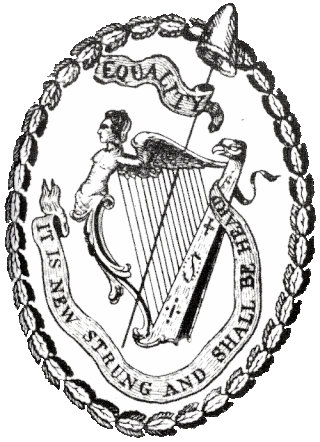
The Society of United Irishmen was a sworn association in the Kingdom of Ireland formed in the wake of the French Revolution to secure "an equal representation of all the people" in a national government. Despairing of constitutional reform, and in defiance both of British Crown forces and of Irish sectarian division, in 1798 the United Irishmen instigated a republican rebellion. Their suppression was a prelude to the abolition of the Irish Parliament in Dublin and to Ireland's incorporation in a United Kingdom with Great Britain. An attempt to revive the movement and renew the insurrection following the Acts of Union led to an abortive rising in Dublin in 1803.

Henry Joy McCracken was an Irish republican, a leading member of the Society of the United Irishmen and a commander of their forces in the field in the Rebellion of 1798. In pursuit of an independent and democratic Irish republic, he sought to ally the disaffected Presbyterians organised in the Society with the Catholic Defenders, and in 1798 to lead their combined forces in Antrim against the British Crown. Following the defeat and dispersal of the rebels under his command, McCracken was court-martialled and executed in Belfast.

William Drennan was an Irish physician and writer who moved the formation in Belfast and Dublin of the Society of United Irishmen. He was the author of the Society's original "test" which, in the cause of representative government, committed "Irishmen of every religious persuasion" to a "brotherhood of affection". Drennan had been active in the Irish Volunteer movement and achieved renown with addresses to the public as his "fellow slaves" and to the British Viceroy urging "full and final" Catholic emancipation. After the suppression of the 1798 Rebellion, he sought to advance democratic reform through his continued journalism and through education. With other United Irish veterans, Drennan founded the Belfast [later the Royal Belfast] Academical Institution. As a poet, he is remembered for his eve-of-rebellion When Erin First Rose (1795) with its reference to Ireland as the "Emerald Isle".
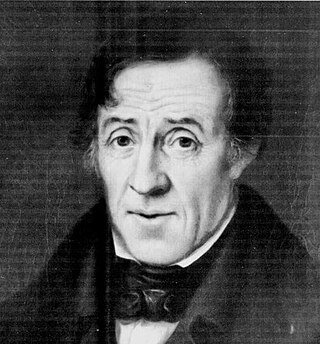
James "Jemmy" Hope was a radical democrat in Ireland who organised among tenant farmers, tradesmen and labourers for the Society of the United Irishmen. In the Rebellion of 1798 he fought alongside Henry Joy McCracken at the Battle of Antrim. In 1803 he attempted to renew the insurrection against the British Crown in an uprising coordinated by Robert Emmett and the new republican directorate in Dublin. Among United Irishmen, Hope was distinguished by his conviction that "the fundamental question at issue between the rulers and the people" was "the condition of the labouring class".
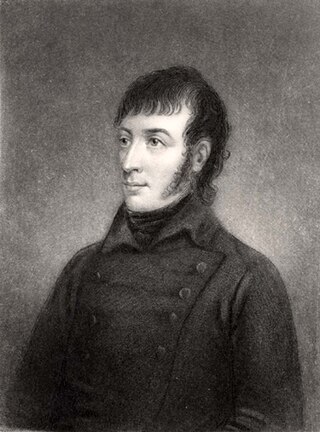
Thomas Paliser Russell was a founding member, and leading organiser, of the United Irishmen marked by his radical-democratic and millenarian convictions. A member of the movement's northern executive in Belfast, and a key figure in promoting a republican alliance with the agrarian Catholic Defenders, he was arrested in advance of the risings of 1798 and held until 1802. He was executed in 1803, following Robert Emmet's aborted rising in Dublin for which he had tried, but failed, to raise support among United and Defender veterans in the north.

George Crawford Hyndman (1796–1867) was an Irish auctioneer and amateur biologist.
Events from the year 1795 in Ireland.
Events from the year 1792 in Ireland.

Mary Ann McCracken was a social activist and campaigner in Belfast, Ireland, whose extensive correspondence is cited as an important chronicle of her times. Born to a prominent liberal Presbyterian family, she combined entrepreneurship in Belfast's growing textile industry with support for the democratic programme of the United Irishmen; advocacy for women; the organising of relief and education for the poor; and, in a town that was heavily engaged in trans-Atlantic trade, a lifelong commitment to the abolition of slavery. In 2021, Belfast City Council agreed to erect a statue of Mary Ann McCracken in the grounds of Belfast City Hall.

The Ulster History Circle is a heritage organisation that administers Blue Plaques for the area that encompasses the province of Ulster on the island of Ireland. It is a voluntary, not-for-profit organisation, placing commemorative plaques in public places in honour of people and locations that have contributed to all genres of history within the boundary of the Irish province of Ulster, or contemporary country of Northern Ireland. Founded in the early 1980s, the group receives no government funding, unlike many similar organisations in the United Kingdom.
Clifton Street Cemetery, Belfast, holds the graves of a number of Belfast's most distinguished figures. The cemetery, whose entrance is at Henry Place in Belfast, is cared for by Belfast City Council and can only be accessed by prior arrangement with council officials. The cemetery contains the graves of members of the United Irishmen and social reformers as well as industrialists. There are also approximately 8,000 people buried in the cemetery's poor ground.
Samuel McTier was the first president of the Belfast Society of the United Irishmen, a revolutionary organisation in late 18th-century Ireland.
William Tennant (1759–1832), often spelled William Tennent, was an Ulster Presbyterian banker and a leading member in Belfast of the Society of the United Irishmen who, in 1798, sought by insurrection to secure a representative and independent government for Ireland. After a period of imprisonment he returned to the commercial and civic of Belfast, in 1810 helping to found what is today the Royal Belfast Academical Institution.
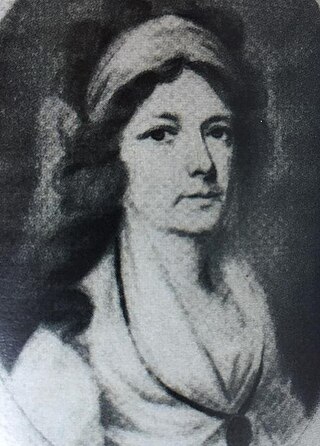
Martha "Matty" McTier was an advocate for women's health and education, and a supporter of democratic reform, whose correspondence with her brother William Drennan and other leading United Irishmen documents the political radicalism and tumult of late eighteenth-century Ireland.

Whitley Stokes (1763–1845) was an eminent Irish physician and polymath. A one-time United Irishman, in 1798 he was sanctioned by Trinity College Dublin for his alleged republicanism. In 1821, he published a rebuttal of Robert Malthus's thesis that, as spurs to population growth, in Ireland attempts to improve the general welfare are self-defeating. The country's problem, Stokes argued, was not her "numbers" but her indifferent government.
Jane "Jenny" Greg (1749–1817) in the 1790s was an Irish republican agitator with connections to radical political circles in England. Although the extent of her activities are unclear, in suppressing the Society of United Irishmen the British commander, General Lake, described Greg as "the most violent creature possible" and as someone who had caused "very great [political] mischief" in her native Belfast.
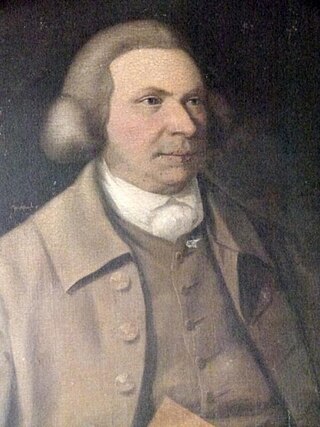
David Manson (1726-1792) was an Irish schoolmaster who in teaching children basic literacy sought to exclude "drudgery and fear" by pioneering the use of play and peer tutoring. His methods were in varying degrees adapted by freely-instructed hedge-school masters across the north of Ireland, and were advertised to a larger British audience by Elizabeth Hamilton in her popular novel The Cottagers of Glenburnie (1808).

James MacDonnell was an Irish physician and polymath who was an active and liberal figure in the civic and political life of Belfast. He was a founding patron of institutions that have since developed as the Royal Victoria Hospital, the Royal Belfast Academical Institution and the Linen Hall Library and, beginning with the organisation of the Belfast Harpers Assembly in 1792, was a promoter of efforts to preserve and revive Irish music and the Irish language. Among some of his contemporaries his reputation suffered in 1803 as a result of his making a subscription for the arrest of his friend, the outlawed United Irishman Thomas Russell.
The test was a pledge taken by members of a democratic political society in the Kingdom of Ireland, the United Irishmen, who in 1798 organised a republican insurrection. As the Society, despairing of reform, began to arm and drill, it amended the original wording to accommodate greater militancy and the need for secrecy. Under the Insurrection Act of 1796, the administration of the test became a capital offense. There were local variants, and societies formed by United Irish exiles, convicts and sympathisers overseas, framed their own tests.

The Belfast Harp Society (1808-1813) and its successor, the Irish Harp Society (1819-1839), were philanthropic associations formed in the town of Belfast, Ireland, for the purpose of sustaining the music and tradition of itinerant Irish harpists, and secondarily, of promoting the study of the Irish language, history, and antiquities. For its patronage, the original society drew upon a diminishing circle of veterans of the patriotic and reform politics of the 1780s and '90s, among them several unrepentant United Irishmen. In its sectarian division, Belfast became increasingly hostile to Protestant interest in distinctive Irish culture. The society reconvened as the Irish Harp Society in 1819 only as a result of a large and belated subscription raised from expatriates in India. Once that source was exhausted, the new society ceased its activity.













